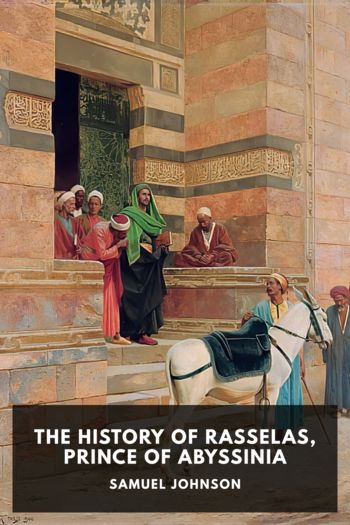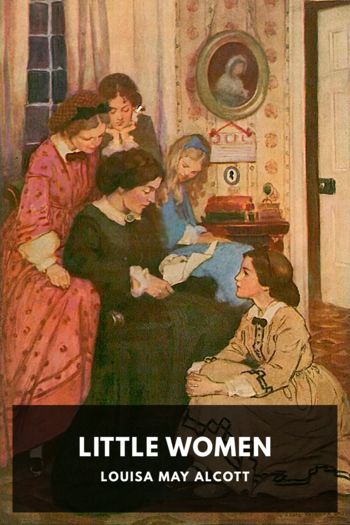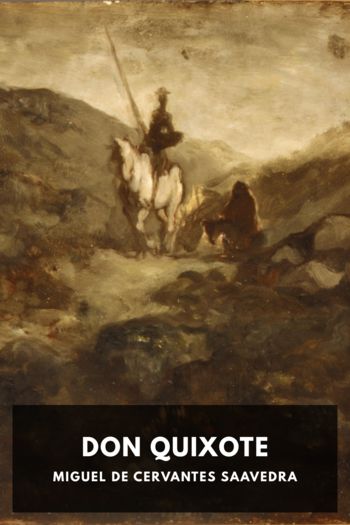
Description
Rasselas is a fable-like story, more apologue than novel, written by Johnson in 1759 to help pay for the costs of his recently-deceased mother’s funeral. While the plot is basic and the characters are thin, the work is an important philosophical piece exploring whether or not humanity can attain happiness.
Rasselas, an Abyssinian prince, travels with his sister Nekayah, her handmaiden Pekuah, and the wise poet Imlac—a proxy for Johnson himself. Their exploration of happiness and the meaning of leading a happy life is a complex and subtle one, though the work ends with “nothing concluded.” Johnson leaves the reader to ponder: Can an individual ever attain happiness in any meaningful sense?

Description
P. T. Barnum, the legendary entertainer and co-founder of the Barnum and Bailey Circus, was not just a successful businessman, but a philanthropist and writer as well. This short, pamphlet-length work distills Barnum’s advice on achieving success and wealth, in his own words.

Description
The Jungle Book is a short collection of stories published by Kipling in various magazines between 1893 and 1894. Kipling spent both his early years and his late teenage years in India, and that upbringing is front and center in these stories—despite them being written while he was living in Vermont, in the United States.
The stories are fable-like, with most of them centering on the lives of anthropomorphised jungle animals and a few focused on human characters in India. The stories were popular from the start, and have since been adapted in countless ways in print, screen, and other media.

Description
Father Goriot, today considered one of Balzac’s most important works, is part of his novel sequence The Human Comedy. It’s the first of Balzac’s novels to feature recurring characters, a technique that he famously developed in his subsequent novels.
Set in Paris during the Bourbon Restoration of the early 1800s, Father Goriot follows Eugène de Rastignac, a student born to noble roots but little means, as he tries to climb the social ladder in Paris. The impoverished Goriot is staying at the same boardinghouse as Rastignac—and Rastignac sees opportunity in Goriot’s richly-married and elegant daughters.
The novel has been widely praised for its realist portrayal of Parisian life of various social classes, and its deep influence on French literature is still felt today. While it had chapter breaks when it was initially serialized, Balzac removed them when compiling his definitive edition of The Human Comedy, a change that is preserved in this edition.

Description
Father Brown is a Catholic priest, but a slightly unusual one in that he’s also an amateur detective. Unlike his more famous literary cousin Sherlock, Father Brown takes a less analytical and more intuition-oriented approach to solving the many murders that he happens to come across.
This collection of short murder mysteries is Brown’s first appearance on the literary stage. In it we see him practicing his unique brand of sleuthing alongside his sometimes-partner, the reformed master criminal Flambeau.

Description
Little Women is the classic coming-of-age tale of four sisters on their journey to adulthood. Though today it’s considered a classic, Little Women almost wasn’t written: Alcott wanted to publish a collection of short stories instead, but her publisher and her father pressed her to write a book that would appeal to a wide audience of young girls.
The first volume was written quickly and published in 1868; it was a huge success, and Alcott composed volume 2 just as quickly and published it in 1869. By her own account she didn’t enjoy writing them, and both she and her publisher agreed the first few chapters were dull—it almost goes without saying they were pleasantly shocked at the positive reception the volumes received.
By 1927 it had been acknowledged as one of the most widely-read novels of the era, and remains widely read today.

Description
Three Men in a Boat is one of the most popular English travelogues, having never been out of print since its publication in 1889 and causing its publisher to comment, “I cannot imagine what becomes of all the copies of that book I issue. I often think the public must eat them.”
The novel itself is a brisk, light-hearted, and funny account of a two-week boating holiday taken by three friends up the Thames river. Jerome is a sort of everyman narrator, and even the stodgiest reader can sympathize with at least some of the situations and conundrums he and his friends find themselves in during their adventure.
Interspersed between comic moments are slightly more serious descriptions of the picturesque villages and landscape the friends explore, making Three Men in a Boat not just a comic novel but an actual account of the life, times, and land of late 19th century greater London.

Description
The Luck of Barry Lyndon was first published as a serial in Fraser’s Magazine, then later as a complete volume entitled The Memoirs of Barry Lyndon, Esq.—a title Thackeray disliked, but that was selected by his publisher. Thackeray had great difficulty composing the novel, and found himself frequently frustrated in his attempts to get Barry out of yet another jam. Ultimately he was displeased with his work, and considered it one of his lesser novels.
Despite Thackeray’s neglect, Barry Lyndon is a bright satire filled with many genuinely funny moments. Barry is the quintessential unreliable narrator, and through his outrageous boasts and tall tales he becomes not just the target of the satire, but its very agent as well. Fortunately modern critics have viewed Barry Lyndon in a much more favorable light than Thackeray’s contemporaries, and even Thackeray himself: today it’s considered by some critics as one of his finest works.

Description
H. G. Wells’ classic tale of alien invasion has to this day never been out of print. Like many works of the era, it was originally published as a serial—though the publisher, Pearson’s Magazine, demanded to know the ending before committing to publication.
The War of the Worlds, with its matter-of-fact narrative style and deft mixture of contemporary science and fictionalized interstellar war machines, became an instant hit. Its themes of colonialism, social Darwinism, good and evil, and total war still resonate with modern-day readers, so much so that it’s been continuously adapted for screen, radio, television, comics, and print.

Description
Don Quixote is a novel that doesn’t need much introduction. Not only is it widely considered the greatest Spanish literary work of all time, one of the greatest literary works in history, and a cornerstone of the Western literary canon, it’s also considered one of the first—if not the first—modern novels.
This Standard Ebooks edition is believed to be the first ebook edition of Don Quixote to feature a full transcription of translator John Ormsby’s nearly 1,000 footnotes. Ormsby as an annotator deftly explains obscure passages, gives background on the life and times of 1600s Spain, references decisions from other contemporary translators, and doesn’t hold back from sharing his views on the genius—and flaws—of Cervantes’ greatest work.
The story is of the eponymous Don Quixote, a country noble who, in his old age, reads too many chivalric romances and goes mad. After convincing his grubby servant, Sancho Panza, to join him as his squire, he embarks on an absurd and comic quest to do good and right wrongs.
Today Don Quixote’s two volumes are published as a single work, but their publication came ten years apart. Cervantes saw great success with the publication of his first volume, and appeared to have little desire to write a second volume until a different author wrote a spurious, inferior sequel. This kicked Cervantes into gear and he wrote volume two, a more serious and philosophical volume than the largely comic first volume.
Despite being written in 1605 and translated in 1885, Don Quixote contains a surprising amount of slapstick laughs—even for the modern reader—and narrative devices still seen in today’s fiction, including meta-narratives, frame narratives, and metafiction. Many scenes (like Quixote’s attack on the windmills) and characters (like Sancho Panza and Lothario) are so famous that they’re ingrained in our collective culture.

Description
Rasselas is a fable-like story, more apologue than novel, written by Johnson in 1759 to help pay for the costs of his recently-deceased mother’s funeral. While the plot is basic and the characters are thin, the work is an important philosophical piece exploring whether or not humanity can attain happiness.
Rasselas, an Abyssinian prince, travels with his sister Nekayah, her handmaiden Pekuah, and the wise poet Imlac—a proxy for Johnson himself. Their exploration of happiness and the meaning of leading a happy life is a complex and subtle one, though the work ends with “nothing concluded.” Johnson leaves the reader to ponder: Can an individual ever attain happiness in any meaningful sense?

Description
P. T. Barnum, the legendary entertainer and co-founder of the Barnum and Bailey Circus, was not just a successful businessman, but a philanthropist and writer as well. This short, pamphlet-length work distills Barnum’s advice on achieving success and wealth, in his own words.

Description
The Jungle Book is a short collection of stories published by Kipling in various magazines between 1893 and 1894. Kipling spent both his early years and his late teenage years in India, and that upbringing is front and center in these stories—despite them being written while he was living in Vermont, in the United States.
The stories are fable-like, with most of them centering on the lives of anthropomorphised jungle animals and a few focused on human characters in India. The stories were popular from the start, and have since been adapted in countless ways in print, screen, and other media.

Description
Father Goriot, today considered one of Balzac’s most important works, is part of his novel sequence The Human Comedy. It’s the first of Balzac’s novels to feature recurring characters, a technique that he famously developed in his subsequent novels.
Set in Paris during the Bourbon Restoration of the early 1800s, Father Goriot follows Eugène de Rastignac, a student born to noble roots but little means, as he tries to climb the social ladder in Paris. The impoverished Goriot is staying at the same boardinghouse as Rastignac—and Rastignac sees opportunity in Goriot’s richly-married and elegant daughters.
The novel has been widely praised for its realist portrayal of Parisian life of various social classes, and its deep influence on French literature is still felt today. While it had chapter breaks when it was initially serialized, Balzac removed them when compiling his definitive edition of The Human Comedy, a change that is preserved in this edition.

Description
Father Brown is a Catholic priest, but a slightly unusual one in that he’s also an amateur detective. Unlike his more famous literary cousin Sherlock, Father Brown takes a less analytical and more intuition-oriented approach to solving the many murders that he happens to come across.
This collection of short murder mysteries is Brown’s first appearance on the literary stage. In it we see him practicing his unique brand of sleuthing alongside his sometimes-partner, the reformed master criminal Flambeau.

Description
Little Women is the classic coming-of-age tale of four sisters on their journey to adulthood. Though today it’s considered a classic, Little Women almost wasn’t written: Alcott wanted to publish a collection of short stories instead, but her publisher and her father pressed her to write a book that would appeal to a wide audience of young girls.
The first volume was written quickly and published in 1868; it was a huge success, and Alcott composed volume 2 just as quickly and published it in 1869. By her own account she didn’t enjoy writing them, and both she and her publisher agreed the first few chapters were dull—it almost goes without saying they were pleasantly shocked at the positive reception the volumes received.
By 1927 it had been acknowledged as one of the most widely-read novels of the era, and remains widely read today.

Description
Three Men in a Boat is one of the most popular English travelogues, having never been out of print since its publication in 1889 and causing its publisher to comment, “I cannot imagine what becomes of all the copies of that book I issue. I often think the public must eat them.”
The novel itself is a brisk, light-hearted, and funny account of a two-week boating holiday taken by three friends up the Thames river. Jerome is a sort of everyman narrator, and even the stodgiest reader can sympathize with at least some of the situations and conundrums he and his friends find themselves in during their adventure.
Interspersed between comic moments are slightly more serious descriptions of the picturesque villages and landscape the friends explore, making Three Men in a Boat not just a comic novel but an actual account of the life, times, and land of late 19th century greater London.

Description
The Luck of Barry Lyndon was first published as a serial in Fraser’s Magazine, then later as a complete volume entitled The Memoirs of Barry Lyndon, Esq.—a title Thackeray disliked, but that was selected by his publisher. Thackeray had great difficulty composing the novel, and found himself frequently frustrated in his attempts to get Barry out of yet another jam. Ultimately he was displeased with his work, and considered it one of his lesser novels.
Despite Thackeray’s neglect, Barry Lyndon is a bright satire filled with many genuinely funny moments. Barry is the quintessential unreliable narrator, and through his outrageous boasts and tall tales he becomes not just the target of the satire, but its very agent as well. Fortunately modern critics have viewed Barry Lyndon in a much more favorable light than Thackeray’s contemporaries, and even Thackeray himself: today it’s considered by some critics as one of his finest works.

Description
H. G. Wells’ classic tale of alien invasion has to this day never been out of print. Like many works of the era, it was originally published as a serial—though the publisher, Pearson’s Magazine, demanded to know the ending before committing to publication.
The War of the Worlds, with its matter-of-fact narrative style and deft mixture of contemporary science and fictionalized interstellar war machines, became an instant hit. Its themes of colonialism, social Darwinism, good and evil, and total war still resonate with modern-day readers, so much so that it’s been continuously adapted for screen, radio, television, comics, and print.

Description
Don Quixote is a novel that doesn’t need much introduction. Not only is it widely considered the greatest Spanish literary work of all time, one of the greatest literary works in history, and a cornerstone of the Western literary canon, it’s also considered one of the first—if not the first—modern novels.
This Standard Ebooks edition is believed to be the first ebook edition of Don Quixote to feature a full transcription of translator John Ormsby’s nearly 1,000 footnotes. Ormsby as an annotator deftly explains obscure passages, gives background on the life and times of 1600s Spain, references decisions from other contemporary translators, and doesn’t hold back from sharing his views on the genius—and flaws—of Cervantes’ greatest work.
The story is of the eponymous Don Quixote, a country noble who, in his old age, reads too many chivalric romances and goes mad. After convincing his grubby servant, Sancho Panza, to join him as his squire, he embarks on an absurd and comic quest to do good and right wrongs.
Today Don Quixote’s two volumes are published as a single work, but their publication came ten years apart. Cervantes saw great success with the publication of his first volume, and appeared to have little desire to write a second volume until a different author wrote a spurious, inferior sequel. This kicked Cervantes into gear and he wrote volume two, a more serious and philosophical volume than the largely comic first volume.
Despite being written in 1605 and translated in 1885, Don Quixote contains a surprising amount of slapstick laughs—even for the modern reader—and narrative devices still seen in today’s fiction, including meta-narratives, frame narratives, and metafiction. Many scenes (like Quixote’s attack on the windmills) and characters (like Sancho Panza and Lothario) are so famous that they’re ingrained in our collective culture.